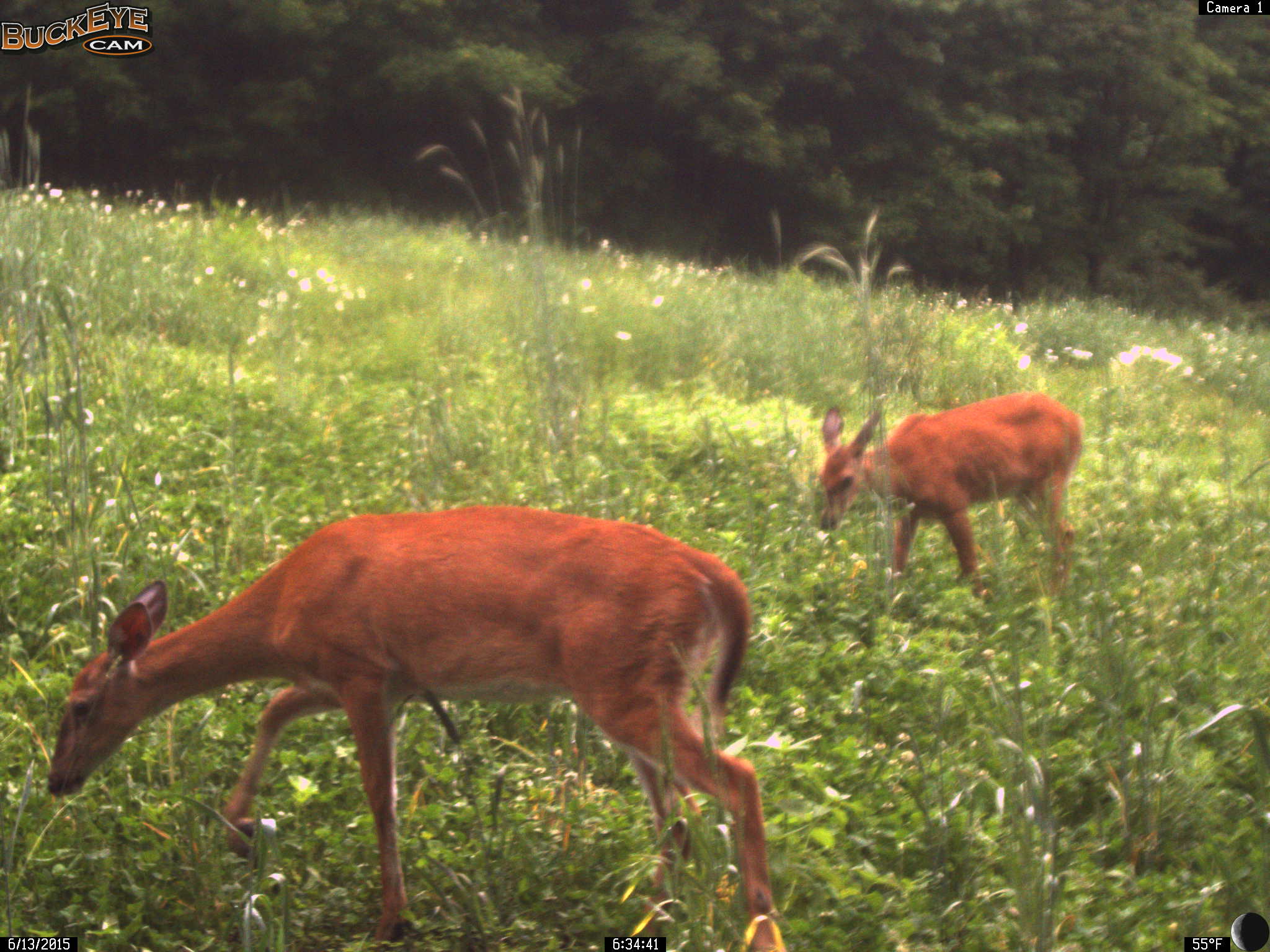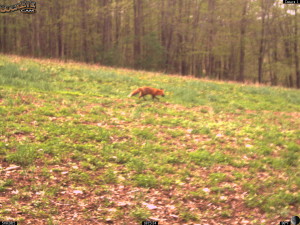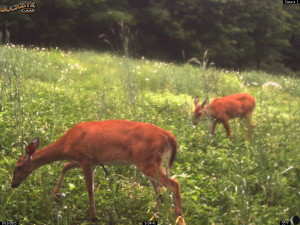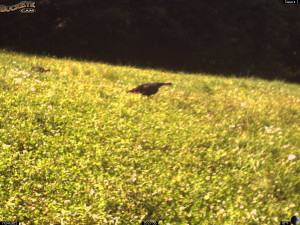Mowing Whitetail Institute Whitetail Clover as part of summer maintenance. (we apologize for the quality of the photos in our blog, which is due to the remote location of our camera) We also wanted to highlight the multiple wildlife species that take advantage of our food plots. In the spring after a long western NY State winter, the plot struggles to come back to life. We say struggle because there is damage to the plot during overwintering due to extreme cold in the absence of snow cover. With snow cover, mice make tunnels under the snow damaging the crowns of the overwintering clover plants. Competition from other “weed” plants, both grasses and broadleaf plants, begins immediately as the soil warms in the spring sunshine. The beginning of spring in a perennial food plot is like the start of the Indianapolis 500 with a multitude of plants and seeds competing for light, nutrition and water.
By the time June arrives, unless you have kept up with the herbicide application side of your food plot maintenance program, a variety of grass and broadleaf weeds will begin to arise above the whitetail clover plants and begin to take their place as a permanent part of the food plot. If you miss your opportunity to apply your herbicides in a timely fashion, you now have limited options to control your weeds. The best option for controlling the grass weeds is to use either the herbicide Sethoxydim or Clethodim. Always read and follow label instructions. Control your grass weeds before mowing your plot. The blades of grass prior to mowing will have more surface area to absorb the herbicide. The next best option to reduce current and future broadleaf weed competition is to mow the plot and cut off the seed heads which are trying to produce seeds. We mow the whitetail clover as high as we can to limit damage to the clover, but low enough to cut the tops off as many weeds as we can. The clover is quick to recover if you remove some of the clover foliage. In general cut, not less than 6 inches and not more than 12 inches off the ground.
Since this year we will not be able to make herbicide applications to our plots, we only have the option to mow, as our only maintenance option for 2015. Our only hope is that for the plots we planted last summer, and for some of our well established plots, that our stand will be strong enough to out-compete the constant threat of being overtaken by weeds. This is the first year we have photographed turkeys taking advantage of the whitetail clover in our plots. We have also observed foxes, woodchucks, squirrels, hawks, crows, and bluejays. The whitetail deer are in our plots all year long except for the yarding period in the dead of winter.




